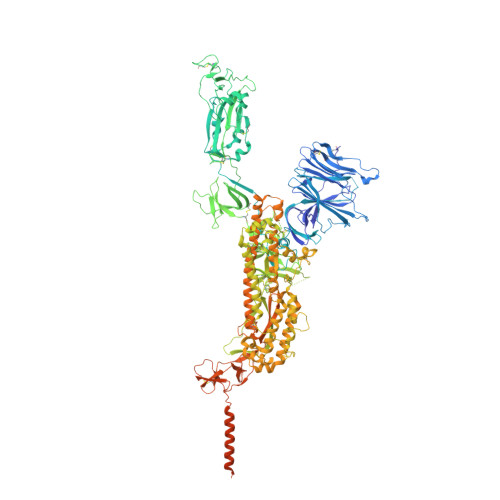Structural and functional impact by SARS-CoV-2 Omicron spike mutations.
Zhang, J., Cai, Y., Lavine, C.L., Peng, H., Zhu, H., Anand, K., Tong, P., Gautam, A., Mayer, M.L., Rits-Volloch, S., Wang, S., Sliz, P., Wesemann, D.R., Yang, W., Seaman, M.S., Lu, J., Xiao, T., Chen, B.(2022) Cell Rep 39: 110729-110729
- PubMed: 35452593
- DOI: https://doi.org/10.1016/j.celrep.2022.110729
- Primary Citation of Related Structures:
7TNW, 7TO4 - PubMed Abstract:
The Omicron variant of severe acute respiratory syndrome coronavirus 2 (SARS-CoV-2), bearing an unusually high number of mutations, has become a dominant strain in many countries within several weeks. We report here structural, functional, and antigenic properties of its full-length spike (S) protein with a native sequence in comparison with those of previously prevalent variants. Omicron S requires a substantially higher level of host receptor ACE2 for efficient membrane fusion than other variants, possibly explaining its unexpected cellular tropism. Mutations not only remodel the antigenic structure of the N-terminal domain of the S protein but also alter the surface of the receptor-binding domain in a way not seen in other variants, consistent with its remarkable resistance to neutralizing antibodies. These results suggest that Omicron S has acquired an extraordinary ability to evade host immunity by excessive mutations, which also compromise its fusogenic capability.
Organizational Affiliation:
Division of Molecular Medicine, Boston Children's Hospital, 3 Blackfan Street, Boston, MA 02115, USA; Department of Pediatrics, Harvard Medical School, 3 Blackfan Street, Boston, MA 02115, USA.


















